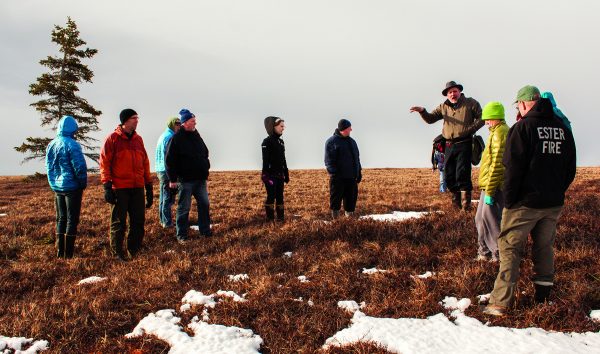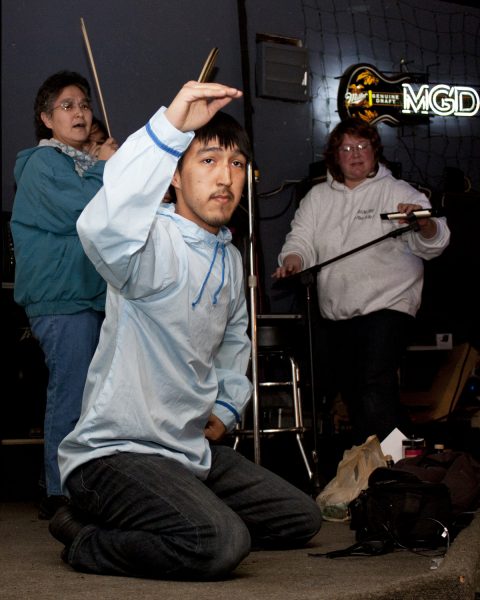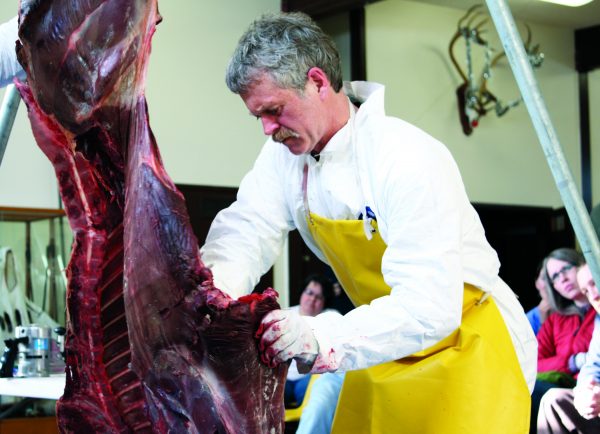Unique conference brings science buzz to rural Alaska
December 21, 2016
Tom Moran
907-474-5581

Download text and photo captions here.
The Western Alaska Interdisciplinary Science Conference has all the trappings of a typical research symposium. There are PowerPoint presentations and question-and-answer sessions, panel discussions, networking in hallways and in watering holes, crowds of seasoned faculty and eager undergrads and everyone in between.
But there are other people in the crowd as well: high-school students. Women in kuspuks. Men in bunny boots and Carhartts. And out the window, ATVs rumble down Front Street in Nome, or eagles fill the Unalaska sky, or dry-docked fishing boats pierce Dillingham’s flat horizon. WAISC calls remote towns like this home, bringing the buzz of science to areas that are often the subject of research but are seldom kept apprised of the results.
“The primary purpose of WAISC is to present what is done scientifically in this region and to make the information accessible in general to everyone in the region — so everyone is invited,” said Claudia Ihl, an associate professor of biology at the University of Alaska Fairbanks Northwest Campus in Nome and a longtime WAISC organizer. “Sure, you could have it in Anchorage or Fairbanks, and all of the scientists from Anchorage or Fairbanks would be there, but we probably wouldn’t have the local people, we wouldn’t have the Native elders who have come to some of the sessions.”

The conferences have been held every spring since 2008 and have rotated among the Western Alaska hub communities of Dillingham, Nome, Bethel, Kotzebue and Unalaska. Subject matter at the conferences is organized around local research concerns, not disciplines, which makes for an impressive variety of subject matter. Topics at the 2016 conference in Dillingham, for example, included fisheries, rural education, coastal erosion and subsistence, while other years have focused more on indigenous knowledge, ice age archaeology or other subjects of local interest.
“Most of the topics that flutter in will be the ones that are relevant and important to our region, for example at this conference we had a big session on waste management,” Ihl said about the 2013 Nome WAISC conference. “And that’s just a big topic in rural communities — what do we do with our garbage? It may not be of interest at some big fancy science conference, but that’s what people here talk about.”
The conferences generally draw about 100 attendees from across the state and a few from elsewhere as well. Residents are invited to all of the conference presentations and encouraged to participate, and many of them present or serve on panels. Local high school students are encouraged to attend and sometimes to present. Many sessions, like an evening workshop on reindeer meat preparation in Nome and a panel on the proposed Pebble Mine in Dillingham, were aimed as much at locals as at attendees and drew large numbers of each.
“What’s the purpose of collecting information if you don’t tell people about it?” noted WAISC founder Todd Radenbaugh, an associate professor of environmental science at the UAF Bristol Bay Campus in Dillingham.

WAISC attendees also get an opportunity to network with locals and to learn more about some of Alaska’s less accessible corners, thanks in part to organized expeditions. Nome participants viewed musk oxen in the wild, and Unalaska visitors donned rubber boots and hardhats to tour the UniSea seafood processing plant. A major focus of the 2016 event was the local impacts of climate change, and attendees got a firsthand look at the local environment through a field trip to see coastal erosion, the town’s new landfill and incinerator, and the nearby village of Aleknagik.
“Instead of talking about global climate change, which you’d expect at a national conference, here we’re talking about how climate change is affecting local culture and geography,” Radenbaugh said.
The 2017 event will be held April 26-29 in Unalaska. For more information, visit https://seagrant.uaf.edu/conferences/waisc/2017/.


